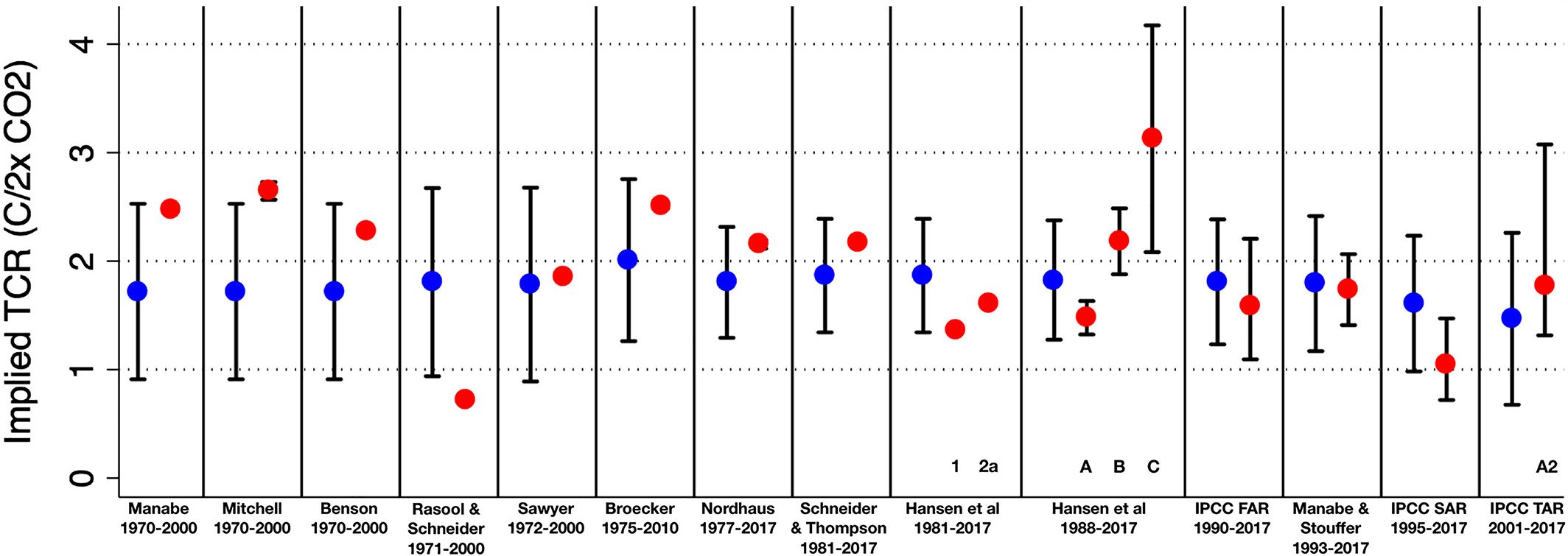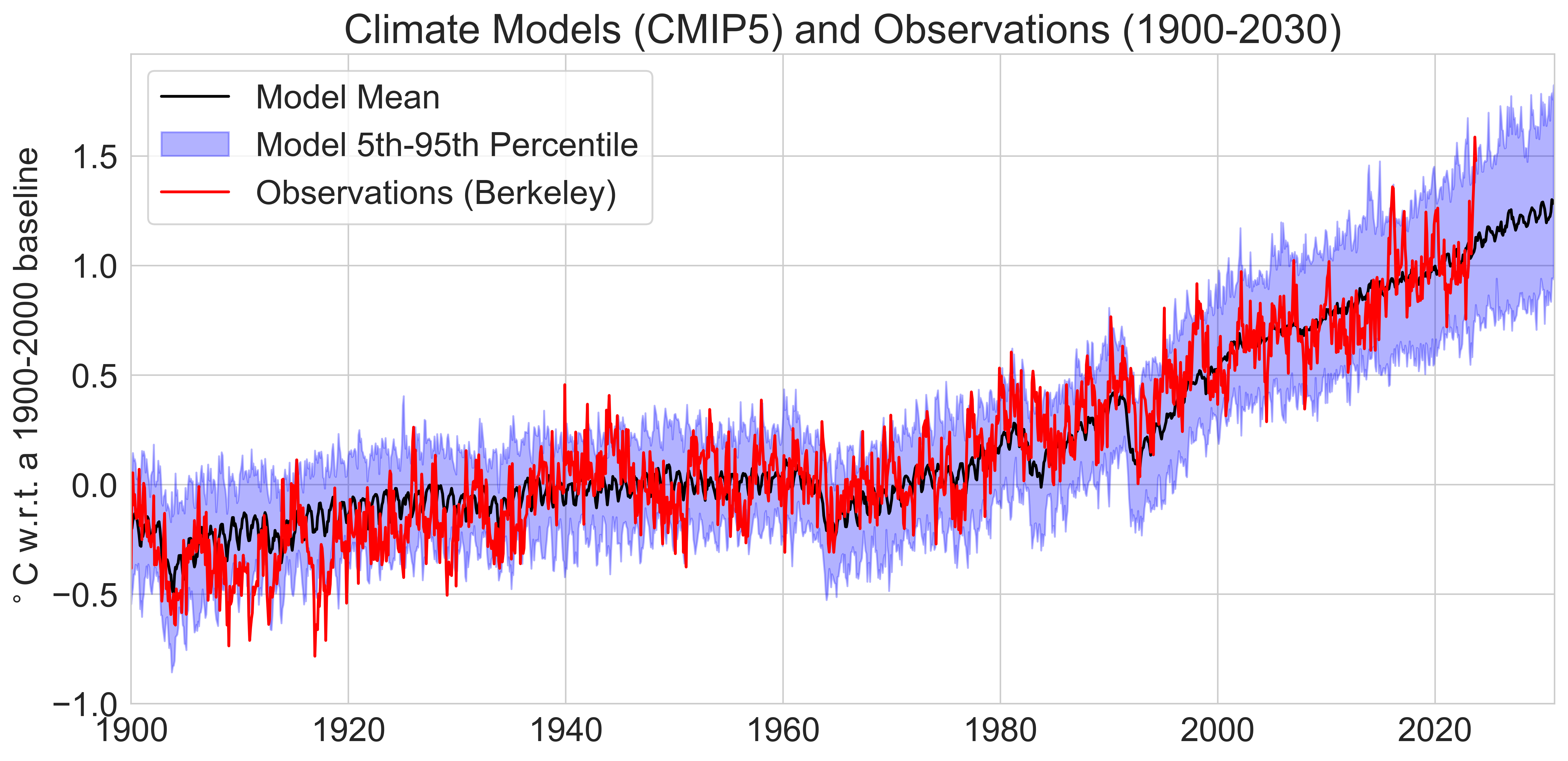
Misrepresentation of sources (strawman): New research shows increased photosynthesis potential of plants under global warming scenarios; it does not imply observed global warming: 1) is not happening; 2) is not happening as much as predicted; or, 3) will not continue to happen.

REVIEW
CLAIM: Earth not warming as predicted by (junk) climate models because plant photosynthesis is absorbing more CO2 than imagined. Climate change is a hoax.
A recent scientific study illustrating the increasing role of photosynthesis under global warming scenarios has been misconstrued to promote climate change denialism. In a November 18th Twitter post, Steve Milloy inaccurately claims the Earth is not warming as predicted by climate models because plant photosynthesis will absorb more CO2 than imagined. Milloy has ties to and defended the tobacco, chemical, and oil and gas industries for years; he considers climate change to be a hoax. His claims are based on his understanding of the study and a November 17th Telegraph article covering the study and have reached over 1.1 million viewers on Twitter.
Before addressing the claim inaccuracies, it is necessary to state that they fall outside the scope of the study, which does not investigate current or future global warming. The study’s lead and corresponding author Dr. Jürgen Knauer (Western Sydney University) confirmed to Science Feedback that Milloy’s claims are unrelated to the study and “any conclusions on what our study means with respect to future global warming remain speculative.”
Global climate models continue to predict global warming well
The Earth is warming as predicted by climate models, contrary to Milloy’s central claim. In fact, we know now that even the first attempts at using early computer models in the 1970’s to predict global warming were reasonably accurate. In a study comparing the predictions of seventeen historical climate model predictions with actual temperature observations since 1970, the majority were consistent with reality (Fig. 1)[1]. After ensuring the performance of each model can be compared fairly (by accounting for differences in historical climate forcings), the results showed that 14 of the models predicted the warming that has been observed (i.e., observations within the uncertainty range). Only three of the models were off: two predicted more warming and one predicted less.
Figure 1 – Comparison between global climate model predictions (red dots) and temperature observations (blue dots). Model predictions are expressed as the change in temperature versus the change in radiative forcing, the “implied TCR”, to provide meaningful model-observation comparisons even if the forcing differs between models. The model name and length of time represented are indicated on the x-axis (source).
In addition to the overall assessments presented in Figure 1, the successful track record of climate models can also be observed on a yearly scale starting from the first predicted year. In 2017, Carbon Brief produced visualizations comparing several original model predictions and actual observed warming for each year since John Sawyer’s (British meteorologist) early 1970’s prediction that the year 2000 would be 0.6°C warmer (he was off by less than 0.1°C). Despite various computational and theoretical limitations as the models developed from simple (energy balance) to advanced (fully-coupled Earth System Models), these predictions have closely matched observations. More visual examples comparing past predictions, or model forecasts, with actual observations of global temperatures can be found here.
Another way we can see how well global climate models have performed is to take them as a whole: a multi-model ensemble. Dozens of institutes and labs around the world model past, present and future climate change effects, each developing their own climate model using different approaches. The Coupled Model Intercomparison Project (CMIP) uses a standard experimental framework to average out the predictions of all these coupled models (ocean-atmosphere coupled) as an ensemble of models, which allows us to get statistically more robust predictions with greater confidence and less uncertainty. We can also see where the models agree or disagree and explore why[2]. The most recent multi-model ensemble, CMIP6, featured 49 climate modelling groups and 100 individual climate models.
The CMIP3 predictions, for example, have clearly survived the test of time (Fig. 2.top). Multiple records of global temperature data observations follow the multi-model average forecasted by CMIP3 from the year 2000, with all observations falling within the uncertainty range. With the ensemble model developed as part of CMIP5 for the 2014 IPCC AR5, we see that the multi-model averages capture historical and recent warming (Fig. 2.bottom).
Figure 2 – Top: Global temperature anomalies (observations, coloured trend lines updated to January 2023) compared to CMIP3 individual simulations performed in 2004 with forcings extrapolated from the year 2000 (black trend line) with model ensemble 95% confidence interval (source). Bottom: Global surface temperature anomalies on a monthly scale (observations, red trend line) compared to CMIP5 climate model predictions (multi-model average, black trend line with 95% confidence interval) until the year 2030 using a baseline period of 1900-2000 (source).
Observational data that falls outside the multi-model 5th-95th percentile range can be considered unsuccessfully modelled, and should therefore statistically be observed in one in twenty times due to the variability of Earth’s climate system (e.g., El Niño and La Niña behaviour–which can exercise large influences on global mean surface temperature). The vast majority of temperature observations in Fig. 2.bottom have been within uncertainty ranges of the historical, present, and future (in the case of CMIP5’s pre-2014 simulations) multi-model predictions. There are even some indications that CMIP predictions up to 2020 have underestimated the magnitude of warming we have since observed[3].
Potential increase in photosynthesis does not imply global warming is not happening
By also claiming “Hoaxers now blaming plants for absorbing more CO2 than imagined”, Steve Milloy not only promotes climate change denialism, but he misrepresents Dr. Knauer’s study. This is the strawman fallacy. Together with Dr. Knauer, we will briefly explain how the original study is unrelated to and does not support Milloy’s claims.
Let’s recall a few concepts. Terrestrial ecosystems play an important role in the global carbon cycle, acting as both sources and sinks of carbon dioxide (CO2). Therefore, terrestrial ecosystems, including plants, affect atmospheric-CO2 levels, which determine the strength of the greenhouse effect and global warming. The ebb and flow of carbon between the atmosphere and ecosystems is called net biome productivity (NBP), featuring the carbon taken up by plants through photosynthesis, called gross primary productivity (GPP), and the carbon released back to the atmosphere, called ecosystem respiration (ER). The difference between these two flows, or fluxes, determines whether an ecosystem is a net sink or source of carbon, in addition to other factors like fires and land use practices. Carbon sinks imply a reduction of atmospheric-CO2 and, possibly, reduced global warming, but an increase in GPP alone is not enough information to tell us if global warming overall will be impacted. There are many questions. Dr. Knauer states how his study is unrelated to Milloy’s inaccurate claims:
“In our study we looked only at GPP. We didn’t look at ER or the actual land sink (NBP). Thus we cannot make definite statements on how future increases in GPP, even if they are stronger than expected, influence NBP or global temperatures.”
Understanding NBP as a whole can help us add up the global carbon budget and improve our projections of future global warming. It is true that because GPP is fundamental to NBP, any change in GPP will affect NBP and the overall carbon balance of ecosystems. But this relationship is indirect; there are several factors that will influence how much a change in GPP will result in a change in NBP. For example, ER is closely tied to temperature, especially at higher temperatures above 20°C[4]. As temperatures rise, biological processes accelerate and so do respiration rates. If respiration increases under global warming more than photosynthesis (GPP) increases, it would offset the atmospheric-CO2 reductions. Fires, droughts, and other ecosystem disturbances can also influence the difference between GPP and ER. As Dr. Knauer explains:
“Since GPP is one component of NBP, a stronger than expected increase in GPP could also lead to a stronger than expected increase in NBP. But there are a couple of reasons why NBP might not follow the same trajectory as GPP. For example, respiration has a strong temperature response and is likely to show a stronger increase than GPP with global warming. Then there are other factors such as fires, droughts, and other disturbances that could increase in frequency and intensity in the future and affect NBP.”
So, while plant photosynthesis can be an indicator of potential atmospheric-CO2 reductions, we also need to consider other factors affecting NPB before we can reasonably predict changes to future global warming[5]. Changes in ER and multiple ecosystem disturbances need to be accounted for. Over time, these new insights on the response of plants and ecosystems to climate change can be incorporated into global climate models to further improve our predictions of future global warming. When new data and insights arise like those in Dr. Knauer’s study, scientists revise models in search of even greater accuracy; see here for some of their thoughts on the process. Ultimately, Milloy’s inaccurate claims that the Earth is not warming as predicted by (junk) climate models because plant photosynthesis is absorbing more CO2 than imagined misconstrued Dr. Knauer’s study:
“In summary, our study suggests that GPP can be higher than previously expected under future climate change. Our study did not look at how NBP will change with climate change and how that could feed back on global warming. Hence, any conclusions on what our study means with respect to future global warming remain speculative.”
Conclusion
Steve Milloy’s claims are inaccurate and unsupported. Climate model predictions have been evaluated and tell us that the global warming we are experiencing today is within the ranges we predicted it to be. Even decades old predictions still hold-up. If anything, evidence suggests warming estimates may have been a bit too conservative and the rate of global warming may be increasing faster than predicted[6]. Milloy’s claims misconstrue and misrepresent the study he uses as support. Increases in photosynthesis, based on new scientific insights, does not imply that global warming is not happening, is not happening as much as predicted, or will not continue to happen.
REFERENCES
- 1 – Hausfather et al. (2020) Evaluating the performance of past climate model projections. Geophysical Research Letters
- 2 – Kim et al. (2020) Evaluation of the CMIP6 multi-model ensemble for climate extreme indices. Weather and Climate Extremes
- 3 – Carvalho et al. (2022) How well have CMIP3, CMIP5 and CMIP6 future climate projections portrayed the recently observed warming. Scientific Reports
- 4 – Gudasz et al. (2021) When does temperature matter for ecosystem respiration? Environmental Research Communications
- 5 – Marcolla et al. (2020). Patterns and trends of the dominant environmental controls of net biome productivity. Biogeosciences
- 6 – Samset et al. (2023) Steady global surface warming from 1973 to 2022 but increased warming rate after 1990. Communications Earth & Environment





